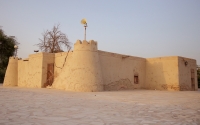
Jawatha Historical Mosque is a historic mosque located in al-Ahsa Governorate in the Eastern Province of the Kingdom of Saudi Arabia . It is the second mosque where Friday prayer was prayed in Islam after the Prophet's Mosque in al-Madinah al-Munawwarah . It is one of the oldest historical mosques in the Islamic world, as it was built in the year 628. It was first built during the time of the Prophet Muhammad, peace be upon him (PBUH), by the Abdul Qays tribe, who inhabited al-Ahsa durin...
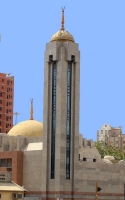
Al-Jinn Mosque is one of the most famous historic mosques in the Kingdom. It is also a site that witnessed events mentioned in the Holy Quran. It is here that Prophet Muhammad, peace be upon him (PBUH), met a group of Jinn, and they embraced Islam. At the same location, they pledged allegiance to him and listened attentively as he recited verses from the Holy Quran. This story was documented in Surah al-Jinn, in the twenty-ninth part of the Holy Quran. The mosque disappeared due to floods, and ...
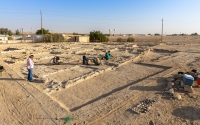
Thaj historical city is one of the cities of the historical Kingdom of Gerrha, which emerged in the third century BC in the northeast of the Arabian Peninsula. Some historical studies indicate that it was a settlement that witnessed multiple layers of human habitation and that it is the lost city of Gerrha. It is the largest archaeological site of the Hellenistic era in the eastern Arabian Peninsula, with an area of eight hundred thousand m2. Thaj Historical City's importance Thaj served a...
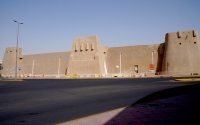
Sahoud Palace is one of the archaeological sites in the Kingdom of Saudi Arabia. It was built between 1790 and 1800. The palace was designed in the form of a fortress and was named 'Sahoud' after a cannon that was placed inside the palace. History of Sahoud Palace The palace is located in al-Ahsa Governorate in the Eastern Province of Saudi Arabia. Its purpose was to defend the city from enemies and protect the agricultural lands in the area. During times of war and siege, it served a...
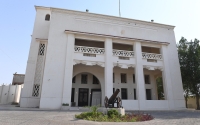
The Artifacts in Makkah al-Mukarramah Province are the material remnants and legacies of ancient human civilizations in Makkah al-Mukarramah Province, located west of the Kingdom of Saudi Arabia. The artifacts in Makkah al-Mukarramah Province during prehistoric times The geographical location and geological formation have contributed to creating a suitable environment for human settlement in Makkah al-Mukarramah Province for a long time. Field research teams have discovered dozens of sites dati...
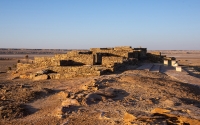
Al-Hamra Palace in Tayma is a historical palace in Tayma, Tabuk Governorate, northwest of the Kingdom of Saudi Arabia. It was discovered in 1979, and contains some historical monuments, including a basket with an Aramaic text and a cubic stone with different scenes and symbols. Construction of al-Hamra Palace in Tayma It was built in the sixth century BC as a religious temple that includes a housing section. However, an additional part constituted the southern section of the palace. Local stone...

Al-Ahsa Oasis is a cultural world heritage site and a tourist cultural destination for the Kingdom of Saudi Arabia. Its fertile land, abundant palm trees, and water springs have made it the largest oasis of palm trees surrounded by sand in the world. It is the largest governorate in the Kingdom, covering an area of 375,000 km², and is one of the governorates in the Eastern Province, which is the largest province in the Kingdom with an area of 540,000 km². It is the fifth Saudi site to be insc...
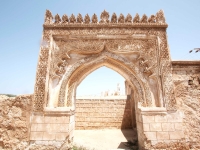
The House of al-Rifai is one of the historical sites on Farasan Island, Jazan Province, Kingdom of Saudi Arabia. It is considered a prominent landmark and a historical and tourist attraction. It is characterized by its diverse geometric forms and inscriptions that have remained unchanged since 1923. 1 2 Design of the House of al-Rifai The House of al-Rifai was constructed by the pearl merchant Ahmed Munawar al-Rifai, who was one of the prominent traders of Farasan in ancient times. Through his ...
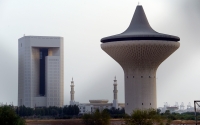
Jeddah Water Tower, or Khuzam Tower , is one of the most important tourist landmarks in Jeddah Governorate, located in Makkah al-Mukarramah Province in the Kingdom of Saudi Arabia. It holds historical significance due to its location next to Khuzam Palace, one of the palaces inhabited by the Founding King Abdulaziz Bin Abdulrahman. The palace witnessed numerous agreements, treaties, and political memorandums, including signing the first oil exploration agreement. Establishment The Ministry o...
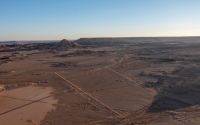
The archaeological site of al-Shuwayhitiyah, located in al-Jawf Province of the Kingdom of Saudi Arabia, is considered the oldest discovered human settlement site in the country. The site contains the oldest recognized human settlement in Asia and the second oldest in the world. Its history dates back to the Oldowan period of the Paleolithic age, over 1.3 million years BC, making it the first settlement on the Arabian Peninsula. Al-Shuwayhitiyah site comprises sixteen settlements and contains a...
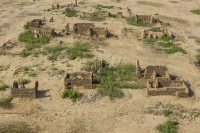
Jazan Province, located in the southwest of the Kingdom of Saudi Arabia, includes many archaeological sites, including: Al-Sehi Site Located in the southwest of Samtah Governorate, site excavations have revealed that the site was intermittently populated between 1300 and 2400 BCE. The site forms the connection point between the eastern coast of Africa and the western Arabian Peninsula. Either Site Located in an area of land inside the Red Sea, it is called Ras Tarfah. It dates back to the peri...
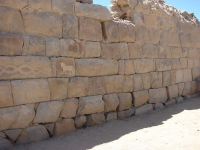
Najran Province, located in the southwest of the Kingdom of Saudi Arabia, features several archaeological sites. An important center along the ancient caravan route, it was a passageway for the tribes of the west and central Arabian Peninsula. Its archaeological sites include: Hima Site The Hima rock art area comprises 550 rock art panels featuring hundreds of thousands of rock inscriptions and petroglyphs. They are written in various ancient scripts, including Thamudic, Nabataean, Ancient Sout...